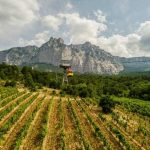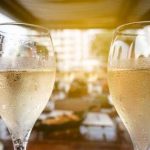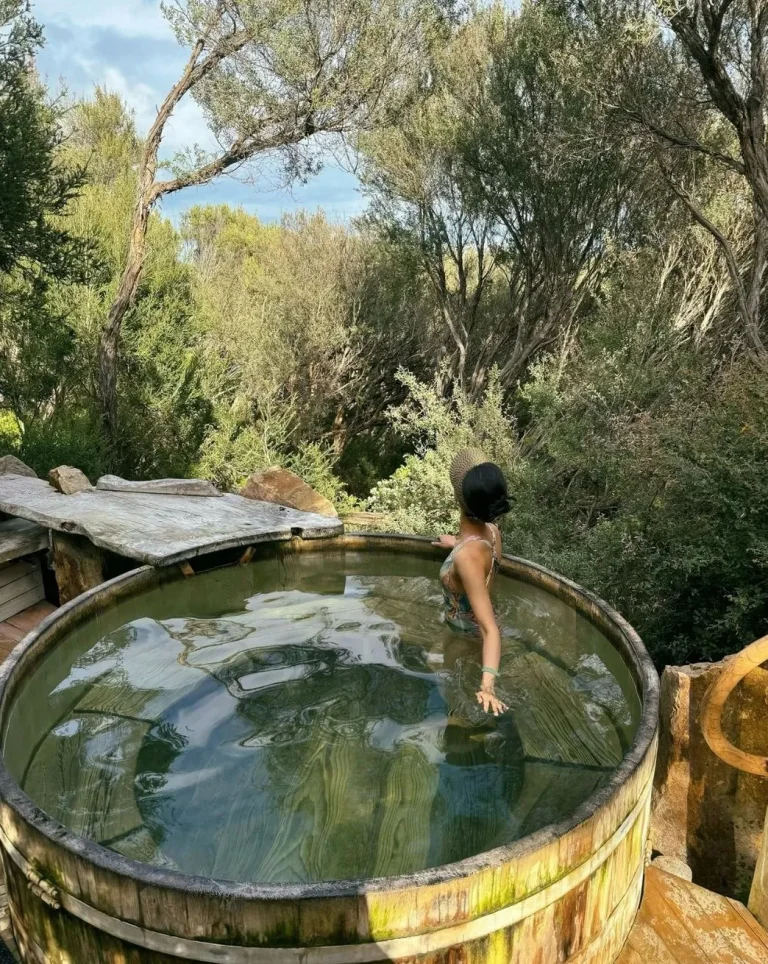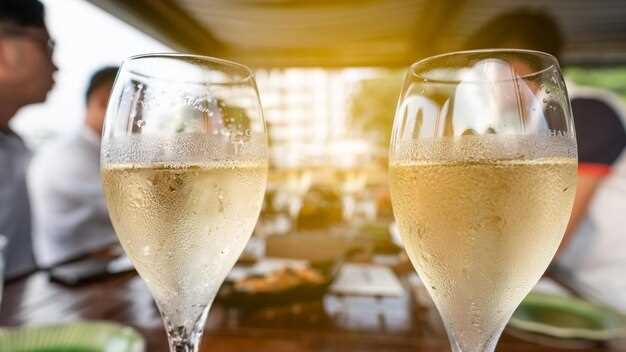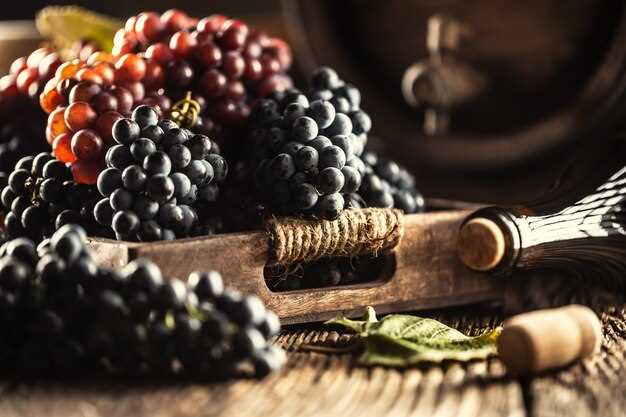
Embark on a journey through time and taste as we delve into the captivating narrative of Italian viniculture. This enchanting tale weaves together the threads of tradition and innovation, revealing the intricate tapestry that has shaped the world of Italian wine. From ancient vineyards nestled in sun-kissed hills to modern winemaking techniques that push the boundaries of flavor, the story of Italian winemaking is a testament to the enduring spirit of craftsmanship and the relentless pursuit of perfection.
Within the hallowed vineyards of Italy, a rich heritage is etched into the very soil that nurtures the grapes. Generation after generation, vintners have honed their craft, passing down age-old techniques and wisdom that have stood the test of time. The art of winemaking is a delicate dance between nature and human touch, where the hands of the vintner guide the grapes from vine to bottle, coaxing out the essence of the land and capturing it in every sip.
Yet, amidst this tapestry of tradition, a spirit of innovation has always been present. Italian winemakers have never been content to rest on the laurels of their ancestors. Instead, they have embraced the ever-evolving world around them, seeking new ways to enhance the flavors and elevate the experience of Italian wine. From the introduction of modern viticultural practices to the adoption of cutting-edge technologies, the pursuit of excellence has driven Italian winemakers to push the boundaries of what is possible.
Today, as we raise a glass of Italian wine, we are not only savoring the culmination of centuries of craftsmanship but also witnessing the fusion of tradition and innovation. Each sip is a testament to the unwavering dedication of those who came before us and the bold vision of those who continue to shape the future of Italian winemaking. So, join us as we embark on this captivating journey, exploring the blend of heritage and ingenuity that has made Italian wine an enduring symbol of excellence.
The Origins of Italian Winemaking: A Journey Through Time
Embark on a captivating exploration of the beginnings of winemaking in Italy, as we delve into the rich tapestry of its ancient origins. This journey through time unveils the fascinating story of how the art of crafting exquisite wines evolved and flourished in the Italian peninsula.
Ancient Roots: Unearthing the Birth of Italian Winemaking
Centuries ago, in the sun-kissed lands of Italy, a deep-rooted passion for winemaking took hold. The ancient inhabitants of this bountiful region recognized the potential of the fertile soil and favorable climate, cultivating vineyards that would lay the foundation for Italy’s winemaking legacy. Through their ingenuity and dedication, they discovered the secrets of nurturing the vines and transforming their precious fruits into a divine elixir.
The Influence of Roman Civilization: A Turning Point in Winemaking
The rise of the Roman Empire marked a significant turning point in the history of Italian winemaking. The Romans, renowned for their appreciation of the finer things in life, recognized the allure of Italian wines and played a pivotal role in spreading viticulture throughout their vast empire. They introduced innovative techniques, such as pruning and trellising, which revolutionized grape cultivation and propelled Italian winemaking to new heights.
Furthermore, the Romans recognized the importance of terroir, understanding that the unique combination of soil, climate, and geography greatly influenced the character and quality of the wines produced. This realization led to the establishment of specific wine-growing regions, each celebrated for its distinctive terroir and grape varieties.
- Explore the rolling hills of Tuscany, where the Sangiovese grape reigns supreme, giving birth to renowned wines such as Chianti and Brunello di Montalcino.
- Travel to the sun-drenched shores of Sicily, where the volcanic soil and Mediterranean climate create the perfect conditions for producing bold and expressive wines.
- Discover the enchanting vineyards of Piedmont, nestled at the foot of the majestic Alps, where Nebbiolo grapes give life to the elegant and age-worthy Barolo and Barbaresco wines.
As the Roman Empire crumbled, the knowledge and techniques of winemaking were preserved and passed down through generations, ensuring the continuity of Italy’s winemaking traditions.
Join us on this captivating journey through time, as we uncover the origins of Italian winemaking and celebrate the blend of tradition and innovation that has shaped Italy’s reputation as one of the world’s premier wine-producing countries.
Unearthing the Ancient Roots of Italian Wine Production
Delving into the origins of winemaking in Italy reveals a rich tapestry of ancient traditions and techniques that have shaped the country’s wine industry for centuries. This exploration takes us on a journey through time, uncovering the deep-rooted connection between Italian culture and the art of winemaking.
The Legacy of Viniculture in Ancient Italy
Long before the modern era, the ancient inhabitants of Italy recognized the potential of their fertile land for cultivating grapes and producing wine. From the Etruscans to the Romans, winemaking became an integral part of daily life, with vineyards dotting the landscape and wine serving as a symbol of prosperity and celebration.
The Influence of Ancient Winemaking Techniques
The techniques employed by ancient winemakers in Italy continue to shape the production methods used today. From the use of clay amphorae for fermentation and storage to the practice of blending different grape varieties to achieve unique flavors, these age-old techniques have stood the test of time and remain an essential part of Italian winemaking.
- Amphorae: The Ancient Wine Vessels
- Terracotta: A Timeless Medium for Fermentation
- The Art of Blending: Creating Harmonious Flavors
By unearthing the ancient roots of Italian wine production, we gain a deeper appreciation for the traditions and techniques that have shaped this renowned industry. The blend of tradition and innovation in Italian winemaking is a testament to the enduring legacy of the past and the constant pursuit of excellence in the present.
The Influence of Roman Viticulture on Italian Winemaking
The impact of Roman viticulture on the development of winemaking in Italy cannot be overstated. The ancient Romans were pioneers in the cultivation and production of wine, leaving a lasting legacy that continues to shape Italian winemaking traditions today.
During the Roman Empire, viticulture flourished throughout the Italian peninsula, with vineyards stretching from the hills of Tuscany to the volcanic slopes of Mount Vesuvius. The Romans recognized the importance of terroir, carefully selecting and cultivating grape varieties that thrived in different regions, resulting in a diverse range of wines with distinct characteristics.
One of the key contributions of Roman viticulture was the introduction of advanced winemaking techniques. They perfected the art of fermentation, using wooden barrels and amphorae to age and store their wines. The Romans also developed methods for pruning and training grapevines, improving grape quality and yield.
Furthermore, the Romans played a crucial role in spreading viticultural knowledge throughout their vast empire. They established vineyards in conquered territories, such as Gaul (modern-day France) and Hispania (modern-day Spain), and shared their expertise with local populations. This exchange of knowledge led to the development of new winemaking techniques and the cultivation of different grape varieties.
The Roman influence on Italian winemaking can still be seen today in the use of Latin terminology. Many Italian wine regions and grape varieties bear names derived from Latin, such as Chianti (from the Latin word “Clante”), Sangiovese (from “Sanguis Jovis”), and Trebbiano (from “Tribulanus”). This linguistic connection serves as a reminder of the enduring impact of Roman viticulture.
In conclusion, the influence of Roman viticulture on Italian winemaking is undeniable. Their pioneering techniques, emphasis on terroir, and dissemination of knowledge laid the foundation for the rich winemaking traditions that continue to thrive in Italy today.
The Renaissance of Italian Winemaking: Reviving Tradition
In this section, we will delve into the resurgence of traditional winemaking practices in Italy, breathing new life into the age-old art of crafting exquisite wines. By embracing the rich heritage and cultural significance of winemaking, Italian vintners have embarked on a journey to revive the traditions that have been passed down through generations.
Embracing Heritage: A Return to Roots
Italian winemakers have recognized the value of their ancestral knowledge and techniques, realizing that the key to producing exceptional wines lies in reconnecting with their roots. By studying ancient winemaking manuscripts and consulting with experienced local artisans, they have gained a deeper understanding of the traditional methods that were once the cornerstone of Italian winemaking.
Through this reconnection with their heritage, winemakers have rediscovered forgotten grape varieties and terroirs, allowing them to create unique and distinctive wines that showcase the diversity and richness of Italy’s viticultural landscape.
Preserving Authenticity: Balancing Tradition and Innovation
While the renaissance of Italian winemaking celebrates tradition, it also embraces innovation to meet the demands of a modern market. Winemakers have found a delicate balance between preserving authenticity and incorporating new techniques and technologies that enhance the quality and consistency of their wines.
By combining traditional winemaking practices with modern viticultural knowledge, Italian vintners have been able to refine their craft and produce wines that capture the essence of their terroir while meeting the evolving tastes and preferences of wine enthusiasts around the world.
The renaissance of Italian winemaking is not just a revival of tradition; it is a celebration of the past, present, and future of this ancient art form. Through their dedication to preserving and reviving the traditions of their ancestors, Italian winemakers have ensured that the legacy of Italian winemaking will continue to thrive for generations to come.
The Role of Monastic Orders in Preserving Winemaking Techniques
Throughout the centuries, monastic orders have played a significant role in safeguarding and passing down the art of winemaking. These religious communities, known for their dedication to spiritual pursuits, have also been instrumental in preserving the traditional methods and knowledge associated with the production of wine. By embracing innovation while staying true to their heritage, monastic orders have contributed to the continuous evolution of Italian winemaking.
Preservation of Ancient Techniques
Monastic orders have served as custodians of ancient winemaking techniques, ensuring their survival and transmission from one generation to the next. Within the walls of monasteries, monks meticulously documented and refined these methods, recognizing their value in producing exceptional wines. Through their commitment to preserving these traditions, monastic orders have helped maintain the authenticity and distinctiveness of Italian winemaking.
Experimentation and Innovation
While rooted in tradition, monastic orders have also embraced innovation in winemaking. Monks have been known to experiment with different grape varieties, cultivation techniques, and fermentation processes, seeking to improve the quality and taste of their wines. By combining their deep understanding of traditional practices with a willingness to explore new approaches, monastic orders have contributed to the advancement of winemaking in Italy.
- Monks have been pioneers in vineyard management, implementing innovative irrigation systems and sustainable farming practices.
- They have also been instrumental in the development of aging techniques, such as barrel aging and bottle aging, to enhance the flavor profiles of their wines.
- Monastic orders have actively shared their knowledge and expertise with local winemakers, fostering a spirit of collaboration and continuous improvement in the industry.
In conclusion, the role of monastic orders in preserving winemaking techniques cannot be overstated. Their dedication to tradition, combined with a willingness to embrace innovation, has shaped the rich history and ongoing evolution of Italian winemaking. Through their efforts, monastic orders have ensured that the art and science of winemaking continue to thrive, producing wines that are a testament to both the past and the future.
The Evolution of Italian Wine Regions and Grape Varieties
In the realm of Italian viticulture, the development of wine regions and the cultivation of grape varieties have undergone a fascinating evolution over the centuries. This evolution has been shaped by a delicate interplay between tradition and innovation, resulting in a diverse and rich tapestry of wines that showcase the unique terroir and cultural heritage of Italy.
Exploring Ancient Origins
The roots of Italian winemaking can be traced back to ancient times, where grape cultivation and wine production were integral parts of the Mediterranean civilization. From the sun-drenched hills of Sicily to the lush vineyards of Tuscany, the ancient Italians recognized the potential of their land for viticulture and began experimenting with different grape varieties and winemaking techniques.
Over time, distinct wine regions started to emerge, each with its own microclimate, soil composition, and grape varieties. These early pioneers laid the foundation for the diverse range of Italian wines we know today.
A Journey Through Time
As the centuries passed, Italian winemaking continued to evolve, influenced by various factors such as cultural exchanges, technological advancements, and changing consumer preferences. The Roman Empire played a significant role in spreading viticulture throughout its territories, introducing new grape varieties and winemaking practices to different regions.
During the Middle Ages, monastic orders played a crucial role in preserving and advancing winemaking knowledge. They meticulously documented grape varieties, vineyard management techniques, and winemaking processes, ensuring the continuity of Italian winemaking traditions.
In more recent history, the unification of Italy in the 19th century brought about a renewed focus on viticulture and winemaking. The development of transportation networks and the establishment of quality standards further propelled the growth of Italian wine regions and the exploration of different grape varieties.
A Modern Renaissance
In the 20th century, Italian winemaking experienced a renaissance, marked by a renewed emphasis on quality and innovation. Winemakers began experimenting with international grape varieties, blending them with traditional Italian varieties to create unique and exciting wines.
Today, Italian wine regions continue to evolve, with a growing emphasis on sustainable and organic practices. Winemakers are rediscovering ancient grape varieties and reviving traditional winemaking techniques, while also embracing modern technology to enhance quality and consistency.
The evolution of Italian wine regions and grape varieties is an ongoing journey, reflecting the dynamic nature of the Italian wine industry. It is a testament to the passion and dedication of winemakers who strive to preserve tradition while embracing innovation, resulting in wines that captivate the senses and tell the story of Italy’s winemaking heritage.
Innovation in Italian Winemaking: Embracing Modern Techniques
Embracing the advancements of the modern era, Italian winemakers have been at the forefront of innovation in the industry. By incorporating cutting-edge techniques and embracing new technologies, they have revolutionized the art of winemaking, pushing the boundaries of tradition and paving the way for a new era of excellence.
One of the key aspects of this innovation is the utilization of state-of-the-art machinery and equipment. From automated grape harvesters to temperature-controlled fermentation tanks, winemakers have embraced modern technology to streamline and enhance the winemaking process. These advancements not only increase efficiency but also ensure consistency in quality, allowing for the production of wines that are true to their intended flavor profiles.
In addition to technological advancements, Italian winemakers have also embraced innovative viticultural practices. By experimenting with different grape varieties, vineyard management techniques, and irrigation systems, they have been able to adapt to changing climate conditions and produce wines that are resilient and expressive. This commitment to sustainability and adaptability has not only preserved the rich heritage of Italian winemaking but also allowed for the exploration of new terroirs and the creation of unique flavor profiles.
Furthermore, the use of modern winemaking techniques, such as micro-oxygenation and reverse osmosis, has allowed Italian winemakers to exert greater control over the aging and maturation process. By carefully manipulating the oxygen levels and removing impurities, they can achieve desired characteristics and refine the texture and structure of their wines. This precision and attention to detail have elevated the overall quality and complexity of Italian wines, captivating the palates of wine enthusiasts around the world.
While tradition remains at the heart of Italian winemaking, the embrace of modern techniques has propelled the industry forward, ensuring its relevance and continued success in the global market. By combining the wisdom of the past with the innovation of the present, Italian winemakers have created a harmonious blend that celebrates both tradition and progress, resulting in wines that are a true testament to the artistry and passion of their craft.
The Impact of Technology on Vineyard Management and Wine Production
Advancements in technology have revolutionized the way vineyards are managed and wine is produced, ushering in a new era of efficiency and quality. From the use of drones for aerial surveillance to the implementation of precision viticulture techniques, technology has become an indispensable tool in the world of winemaking.
Enhanced Vineyard Management
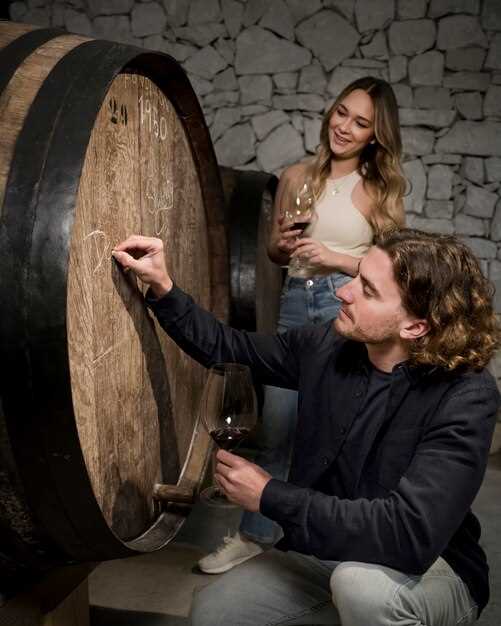
Technology has greatly improved vineyard management practices, allowing for more precise monitoring and care of the vines. With the help of sensors and data analysis, vineyard managers can now gather real-time information on soil moisture levels, temperature, and nutrient content. This data enables them to make informed decisions regarding irrigation, fertilization, and pest control, resulting in healthier vines and higher grape yields.
Streamlined Wine Production
Technology has also streamlined the wine production process, ensuring consistency and quality in every bottle. Automated grape sorting machines have replaced manual labor, ensuring that only the highest quality grapes are used. Fermentation tanks equipped with temperature control systems allow winemakers to closely monitor and regulate the fermentation process, resulting in wines with optimal flavor and aroma profiles.
- Modern bottling and labeling machines have increased production efficiency, reducing the time and labor required to bottle and package wines.
- Barrel aging has been enhanced through the use of oak alternatives, such as oak chips and staves, which provide consistent flavor profiles and reduce costs.
- Wine analysis tools, such as spectrophotometers and gas chromatographs, enable winemakers to analyze and adjust the chemical composition of wines, ensuring they meet desired quality standards.
In conclusion, technology has had a profound impact on vineyard management and wine production. By leveraging the power of data analysis, automation, and precision techniques, winemakers are able to create wines of exceptional quality while optimizing efficiency and sustainability.





